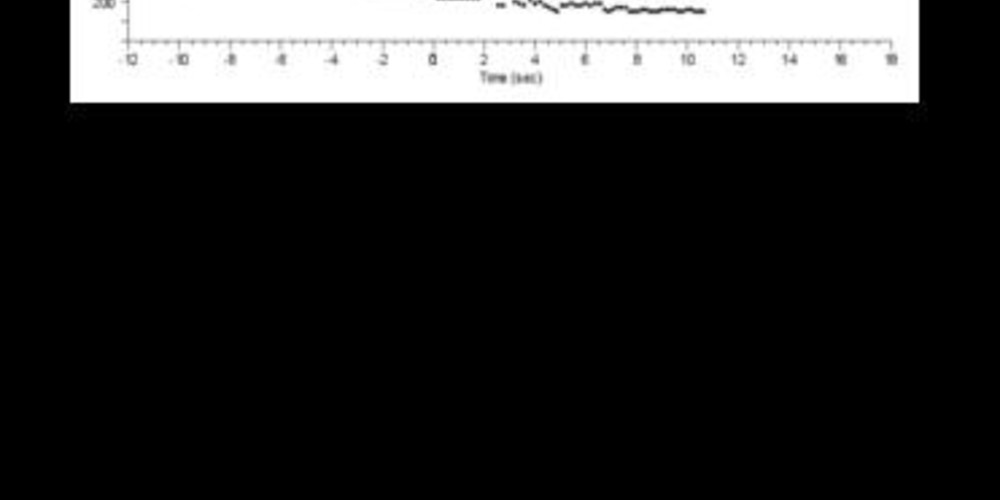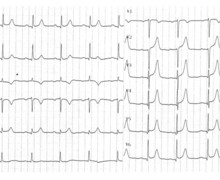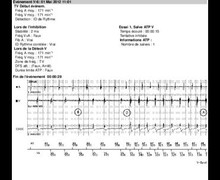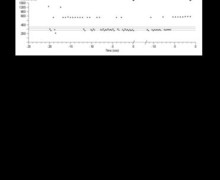T-wave oversensing and inappropriate therapies
Tracing
Manufacturer Medtronic
Device ICD
Field Oversensing
N° 20
Patient
Patient implanted with a dual-chamber ICD (Virtuoso DR) for ischemic cardiomyopathy and hospitalized for syncope and for electrical shock. This tracing allows emphasizing the risks associated with T-wave oversensing.

Graph and trace
On the graph, there is a sudden acceleration of the ventricular rhythm with intervals detected at the limit between the FVT zone and VF zone; a burst is delivered with acceleration of the intervals in the VF zone; a maximum electrical shock terminates the arrhythmia.
- on the EGM, there is an initial sinus tachycardia followed by an oversensing of the T-wave with intervals classified in the FVT zone or in the VF zone (RT interval more or less equal to the TR interval);
- the VF counter is filled, at least one of the last 8 cycles before diagnosis is classified as FS; diagnosis of VF and the first therapy of the zone is delivered comprised of a burst during charging; one can observe that the first cycle of pacing of the burst is delivered at the peak of the T wave, the vulnerable ventricular period;
- the burst degrades the ventricular rhythm into an extremely rapid and polymorphic arrhythmia;
- a maximum electrical shock is delivered and terminates the arrhythmia.
Other articles that may be of interest to you







This tracing shows the potential pro-arrhythmogenic effect of an electrical shock or an anti-tachycardia pacing sequence delivered following an oversensing of the T-wave. The electrical shock is synchronized either on the R-wave or the T-wave. Similarly, as in this patient, the coupling of the first stimulus of an anti-tachycardia pacing burst is calculated by the device based on an erroneous heart rate which can lead to pacing at the peak of the T-wave, the vulnerable ventricular period. In this example, the burst accelerates and disrupts the heart rhythm into an extremely fast polymorphic arrhythmia. Patients with T-wave oversensing and high defibrillation threshold are particularly at risk. Indeed, as explained previously, in the presence of T-wave oversensing, the probability that the shock is delivered on the T-wave and hence during the vulnerable ventricular period is 50%. If the defibrillation threshold is high and approaches the maximum capabilities of the device, the upper vulnerability value is also high. A shock delivered to the T-wave has therefore a very high probability of inducing ventricular fibrillation (concept of upper limit of vulnerability) which will subsequently be very difficult to terminate even with a maximum defibrillation shock (high defibrillation threshold). This implies that any oversensing of the T-wave should be considered as an emergency, since a modification of the programming is required to avoid the occurrence of inappropriate therapies.